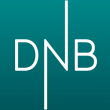Legacy systems in banking: the major barrier for digital transformation
Legacy core banking systems still pose one of the greatest obstacles to companies looking to implement a digital channel strategy.

Modernisation of the core banking system is where the transformation journey begins
And it seems this trend will only persist in the near future, as referenced in PwC’s CIO Global Banking Survey earlier this year.
According to recent research by Talend, nearly half of respondents named legacy software and its natural limitations as one of the biggest barriers for digital transformation in the sector.
Most financial experts also cited it as the main barrier to unlocking the full potential of Big Data analytics. According to nearly 56% of respondents, legacy systems often bear numerous drawbacks, including data integrity and data quality issues that hold decision-makers back from gaining real-time insights critical for the business.
Updating legacy systems
The banking sector has often been resistant to change, due in part to outdated core banking. By definition, core banking encompasses the essential financial services, such as payments, loans, mortgages and accounts, accompanied by the back-end technology involved in these operations.
Given that these fundamental components directly affect the speed and reliability of every process, having them obsolete means the company will struggle to meet even the most common customer demands.
After years of being supported and reworked by different IT service providers, legacy core banking platforms take on a life of their own and are now often costly to own and maintain. For example, older technologies like COBOL, a programming language born in 1959 and still used by banks today, have been named by experts as an evolutionary dead end, simply because they are incompatible with current software solutions.
Fintech, on the contrary, has been developed to be agile and responsive to market changes, therefore efficiently modifying and updating their core systems as required. That’s why, to stay afloat, banks must rethink the way they serve customers and finally get on the road toward digital transformation and innovation.
Top five IT challenges on the road to digital transformation
- Conflicting priorities. Nearly 80% of IT staff in banks spend the majority of their time on recurring tasks.
- Complexity. 36% of banks name complex systems as a top challenge faced by organisations.
- New technologies. Only 5% of banks would consider their technological framework to be cutting-edge.
- Budget constraints. 57% see the lack of budget allocation as a concern for innovation.
- Lack of talent. 40% of banks are getting by without a consistent technology experience.
Legacy software modernisation benefits in a nutshell
- Digital competitiveness: Enables core systems to support the digital features and capabilities required by today’s marketplace.
- Better use of talent: Reduces reliance on increasingly scarce and expensive legacy specialists (e.g., COBOL programmers) and creates a more attractive technology environment for today’s top talent.
- Enhanced service: Supports improved service levels, customer satisfaction and product innovation.
- Reduced risk: Improves regulatory compliance and controls risk—particularly for service changes.
- Lower costs and improved efficiency: Reduces service delivery costs, with potential savings from day one. Enables optimisation of sourcing strategies by capitalising on commercial platform vendors’ expertise and scale economies. Improves user productivity and efficiency, and the evaluation of technology options. Also, moving from a “customise” to a “configure” deployment model helps eliminate technical debt.
- Business value creation: Streamlines business processes and the deployment of new application functionality to drive performance, growth and compliance. Enables data insight and cognitive automation that can create new opportunities to serve clients.
- Preparedness: Modern languages and modernised platforms will be cheaper and easier to maintain and modify in the future.
- Adaptability: Cloud-based solutions enable strategic flexibility and scalability.
- Uncover institutional knowledge: Extracting business rules from legacy systems allows banks to retain the treasure trove of institutional knowledge, giving them a competitive advantage, which can then be imported into industry-standard software packages.
Core legacy system upgrades and app modernisation allow banks to keep up with the latest digital features and innovative capabilities that nearly every customer is now seeking.
Upgrading legacy software will also unlock new delivery models, leaving the door open for even better compatibility — both in terms of today’s technology and talent environment. To adapt to ever-changing market needs and growing user demands, modern banking institutions and other companies in finance need streamlined, standardised and scalable models, accompanied by broader legacy system modernisation approaches.
Tips for upgrading legacy systems the right way
You should consider the following tips when upgrading your legacy system:
- Creative funding. Utilising a clever funding model that puts cost efficiency (or even self-sufficiency) first could be a good way of maintaining legacy systems in a more optimised manner. Later on, the legacy system could be updated using the significant savings in funding.
- Quick wins. Modernisation efforts should deliver quick results, despite many business leaders who are understandably reluctant to sign up for a multi-year improvement strategy. Fortunately, with the right approach to legacy system modernisation, it will be easier to accumulate savings from the total cost of ownership.
- Value over trends. Focus on adding value (not just keeping up with the tech transition itself) as this is a good way of taking on several opportunities at a time. Improve business processes, and extract and capture business rules in line with converting institutional knowledge into a measurable advantage. These are effective ways to stand apart from the competition.
- Migration and rule extraction. Software automation can give a spur to mainframe-to-cloud migration and extraction of business rules. Take advantage of the latest digital tools and automated APIs.
- Making an impact. Honing in on direct business impact (not just technology features and cost) is highlighted by agile solutions. When used correctly, these solutions can produce new apps quickly and, more importantly, flexibly — to easily keep up with market fluctuations and evolving user
- TCO focus. Using the total cost of ownership as a benchmark instead of the purchase price could be arguably the most accurate and relevant way to measure the actual cost.
- Modernisation beyond IT. Never delegate modernisation solely to the IT function, as it could add value to the business globally without being limited to just technology issues. Otherwise, you might end up with a mediocre application update — completed in as many as two years or so.
In conclusion
Regulations, rising customer expectations and growing competition are just a few of the critical challenges facing banks today. Digital transformation and legacy software modernisation can make things easier for banks rather than posing another challenge.
Modernisation of the core banking system is exactly where the transformation journey begins. Banks must redefine their strategy and choose the right software architecture to fit their dynamic environment and make it even more flexible and responsive.
About the author:
Vlad Vahromovs is CEO at software development firm Intellectsoft.











































